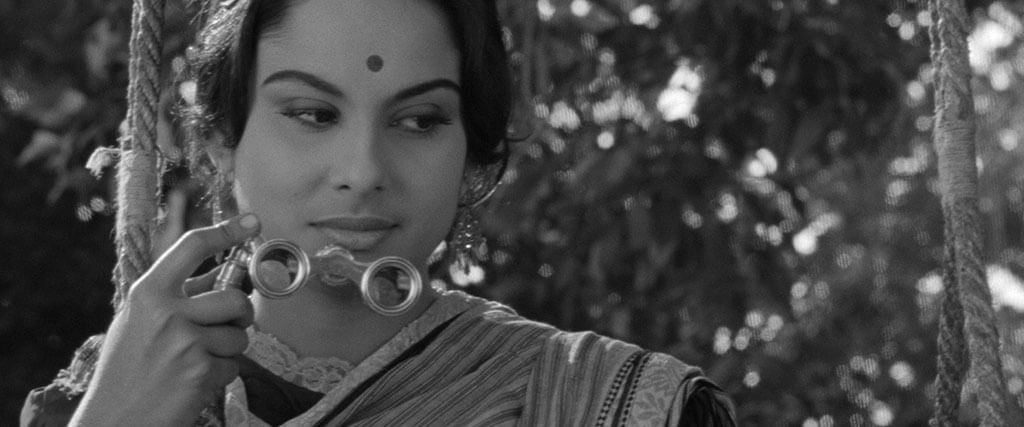
Satyajit Ray’s Charulata: Calm Without, Fire Within
By Maaisha Osman | February 7, 2021
Charulata’s eponymous character personifies the alienation afflicting a generation caught between past and present in colonial Bengal. The film is Satyajit Ray’s 1964 adaptation of the Bengali novel Nashtanirh (The Broken Nest) by Rabindranath Tagore, a polymath—as well as poet, novelist, playwright, composer, painter, philosopher, and winner of the Nobel Prize in Literature, who has blended Bengali literature and classical music with contextual modernism. Set in late-nineteenth-century Calcutta when the Bengal Renaissance was at its peak, and India was under British colonial rule, the film revolves around an intelligent, curious, resilient, and well-cultivated young woman named Charulata, played by Madhabi Mukherjee. Around this time, the western education curricula—introduced into British India in 1835—had given rise to a new bourgeois elite, who forged an uneasy cultural and political coalition between Western liberalism and traditional oriental thought. Perhaps no other movie has captured so vividly fin de siècle cultural anxiety, and the personal entanglements it entails, here seen through the lenses of the intellectual class.
The contrast between the traditional and modern in Calcutta permeates Ray’s films. At times, it appears as an adversary to his innocent characters (like the eponymous Apu of his trilogy), who suffer the impositions of a changing society, and at times as a coadjutor to those (like Bhupati in Charulata) yielding to change with an uneasy conscience. Charulata and Devi (1960) contribute to the historical dialogue in colonial Bengal, where Ray attempts to cast Bengali women as agents to accentuate the tendency of narrative cinema to show without telling or, at least telling much. In Mahanagar (1963), his protagonist exerts her female agency in the external spaces of Calcutta’s streets and workplaces, where she needs to come to terms with the compromises required to achieve her promised independence. This contrast is never more prevalent in Ray’s films than in Charulata, where it is in the internal affairs of the home’s private space and enlightened nineteenth-century marriage that the same Madhabi Mukherjee negotiates, this time through an inconvenient sexual emergence. As Chidananda Dasgupta pointed out, “seldom has a film director’s work chronicled the process of social change in a country over a long span of time as Satyajit Ray’s.” His depiction of modernism put into question the ideas of modernity entrenched in political, social, and cultural aspects of the past hundred years in India.
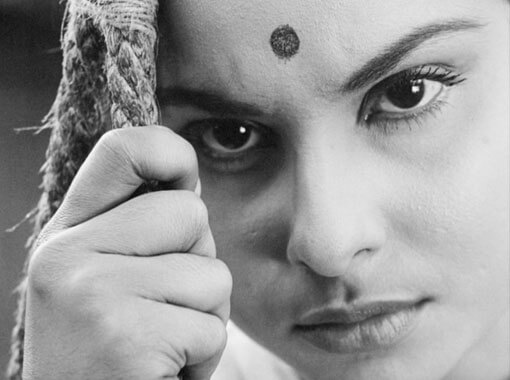 Ray’s films from Pather Panchali (1955) onwards concerned the conflicts between the traditional and modern. They became “an extended study of an emerging nation as filtered through the experiences of men and women who seek to define themselves in relation to the larger forces that are transforming their world,” wrote Brinda Bose on Modernity, Globality, Sexuality, and the City: A Reading of Indian Cinema. He shows these forces that composite identity, within conflicts between feudal and modern, tradition and progress, and the village and city—the old and new. Ray was known for depicting humanism, illusive simplicity, rhythm, and pace in the colonial and postcolonial context. Charulata epitomizes these themes in his work, making its central character, Charu, the ‘Archetypal Ray woman.’
Ray’s films from Pather Panchali (1955) onwards concerned the conflicts between the traditional and modern. They became “an extended study of an emerging nation as filtered through the experiences of men and women who seek to define themselves in relation to the larger forces that are transforming their world,” wrote Brinda Bose on Modernity, Globality, Sexuality, and the City: A Reading of Indian Cinema. He shows these forces that composite identity, within conflicts between feudal and modern, tradition and progress, and the village and city—the old and new. Ray was known for depicting humanism, illusive simplicity, rhythm, and pace in the colonial and postcolonial context. Charulata epitomizes these themes in his work, making its central character, Charu, the ‘Archetypal Ray woman.’
The film begins with the strings of a sitar picking out a remarkable Tagore song, “Momo citté, niti nrityé, ke je naaché . . . ” (“Who is it that dances daily in my heart?”), making a memorable introduction to Charu. Ray’s visual style triumphs in this silent sequence from the beginning of the film, which shows us Charu on a magnificently crafted bed. She tries to entertain herself with a book, discards it, then picks up “Kapalkundala,” a romantic novel by Bankim Chandra Chattopadhyay. Earlier in the scene, Charu hums the name of Bankim—a novelist who introduced the concept of female agency into Bengali literature through the contrast between nabeena (modern woman) and pracheena (traditional woman). The depiction of the ‘ideal Indian woman’ can be traced back to Hindu Vedic tradition in Sanskrit scriptures. In reaction to that, Bankim attempted to recast the image of the ‘ideal Indian woman’ in his novels through his female characters. Charulata builds a multifaceted set of responses to the idea of nabeena, taking shape amid the social self-discovery of post-nineteenth-century Bengali upper-class urbanites. As a symbol of the nabeena, Charu exemplifies the inconsistencies of Indian femininity trapped between traditional and modern expectations.
Ray attempts to elaborate on a despairing historical clash between the colonial past and an emerging present in which all his characters, above all Charu, are caught. He used crucial figurative forms and methods of cinema—namely allegory—that articulate the problem of alienation by modifying the connections between modern femininity and historical consciousness. In his thesis “Ursprung des Deutschen Trauerspiels” (“The Origin of German Tragic Drama”), Walter Benjamin contrasted the past filled with intuition and emotion, in which symbol ruled, against the present where allegory emerges to depict real feelings and experiences. Charulata embodies what Benjamin called the Trauerspiel (tragedy) that deals with internal and external space that are unmoving enigmas of monotony and transformation, tradition and modernity, recklessness and intuition. Benjamin suggested that allegorical reflection seeks the ruination of things so that it can, in its emancipating moment, compose a new entity out of elements of the old. In these terms, Charu extricates herself from the creative invention of fantasy since it maneuvers and rearranges pre-existing material. For Benjamin, allegory is both “convention and expression,” which resonates with Ray’s ideas to represent the film as an allegory in its demarcation of modern ruins and historical immobility.
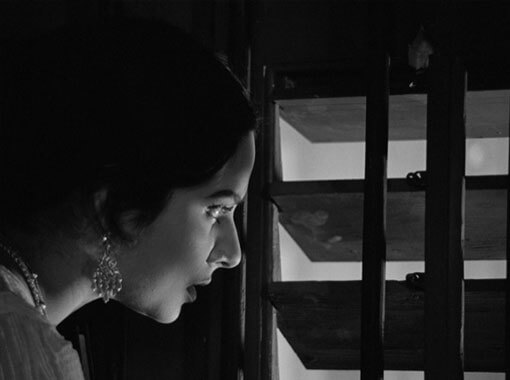 Charu lives the life of a nineteenth-century upper-class young woman, wearied within the confines of her spacious home. Indeed, she has nothing but time on her hands, hands that are shown embroidering, playing cards, and in the most cherished of her movements, writing. The backdrop of the film, filled with baroque objects, signifies the feelings of Charu as a bird in a gilded cage. Ray captures the distraction and curiosity of Charu at the beginning of the film, when she hears noises outside in the street, finds her lorgnette, and moves from window to window, observing a street musician with his monkey, a stout Brahman with his black umbrella (a connotation of his distinguished status), a humming group of porters. All these subjective shots come under the scrutiny of Charu’s glimpses of the street, contemplating the world outside.
Charu lives the life of a nineteenth-century upper-class young woman, wearied within the confines of her spacious home. Indeed, she has nothing but time on her hands, hands that are shown embroidering, playing cards, and in the most cherished of her movements, writing. The backdrop of the film, filled with baroque objects, signifies the feelings of Charu as a bird in a gilded cage. Ray captures the distraction and curiosity of Charu at the beginning of the film, when she hears noises outside in the street, finds her lorgnette, and moves from window to window, observing a street musician with his monkey, a stout Brahman with his black umbrella (a connotation of his distinguished status), a humming group of porters. All these subjective shots come under the scrutiny of Charu’s glimpses of the street, contemplating the world outside.
Charu’s husband, Bhupati (Shailen Mukherjee), an anglicized Bengali intellectual, does not share Charu’s embrace of literature and comprehends that his consuming preoccupation with publishing his nationalist newspaper has led to her lonely existence. Along with his Western liberal sensibilities, he also wants to encourage Charu to become a nabeena who is capable of independence. He invites his cousin, Amal (Soumitra Chatterjee), a dynamic, free-spirited, and thriving writer, to help Charu explore her literary talents. A literature student, he pens romantic prose and spreads fresh energy around the house bringing life to Charu’s universe. The depth of their intimacy is delicately stated throughout many moments shared by Amal and Charu, notably the garden scene, perhaps the most powerful in Bengali cinema. This is when we see Charu in a different spatial context, almost outside of her gilded cage. As Amal lies on the grass trying to uncover his muse for writing, Charu swings back and forth, looking into the lens of Ray’s camera and singing a song by Tagore:
The cuckoo sings in the trees and gardens
Cuckoo, cuckoo, cuckoo,
My absent heart does not know why
It was borne away completely.
Zoom and reverse zoom methods are used, showing that the camera cannot capture Charu’s overall image moving through space and time, leaving the viewers almost dizzy. Keya Ganguly mentions in her book, Cinema, Emergence, and the Films of Satyajit Ray, that “music, camera movement, and Charulata thus collide in something like a parallax view,” showing Charu imprisoned in time as “the emblem of a much more thoroughgoing derangement.” Charu’s affections for Amal are strengthened by the ideological significance of Tagore’s song, giving an impression of continuous events constellated with emotional turbulences. The title of one of Ray’s essays, “Calm Without, Fire Within,” perfectly captures Charu’s character, conveying her feelings through sidelong gestures, fugitive glances, voyeuristic gazes, and murmurs of songs throughout the motion of the film.
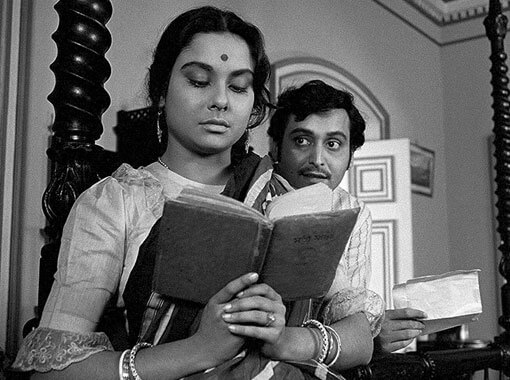 Consider how Ray uses one of cinema’s most universal devices, music, to build upon his allegorical intention. The film’s music represents a disparity between the constraints that play out in the narrative of Charulata-pracheena as opposed to Charulata-nabeena. The film starts with the musical refrains that conjure rhythms of prospering femininity, foreseeing a future outside the narrative’s strict space. If the musical refrains are about being in step (ta ta thoi thoi—the bols, or beats taught to fledgling dancers), Charu is presented out of step with the person dancing in her heart. Instead of being positioned as either nabeena or pracheena, the song casts her as taruni (young woman), relating her with the modesty of girlhood, the idealized romance of the Rubaiyat, and a model of femineity that is quite out of step from the representation of the ‘ideal Indian woman.’ The use of Tagore’s song in this opening sequence suggests how impossibilities and confinements are expressed; how they are, as shown, not only concerning Ray’s explanation of Charu but also in terms of the overall political allegory of India’s emergence. If Charu is to bear the burden of signifying the relay between the past and the present, she also serves as an emblem of the future—as Reinhart Koselleck once said, every meditation on the past is also speculation about future possibilities.
Consider how Ray uses one of cinema’s most universal devices, music, to build upon his allegorical intention. The film’s music represents a disparity between the constraints that play out in the narrative of Charulata-pracheena as opposed to Charulata-nabeena. The film starts with the musical refrains that conjure rhythms of prospering femininity, foreseeing a future outside the narrative’s strict space. If the musical refrains are about being in step (ta ta thoi thoi—the bols, or beats taught to fledgling dancers), Charu is presented out of step with the person dancing in her heart. Instead of being positioned as either nabeena or pracheena, the song casts her as taruni (young woman), relating her with the modesty of girlhood, the idealized romance of the Rubaiyat, and a model of femineity that is quite out of step from the representation of the ‘ideal Indian woman.’ The use of Tagore’s song in this opening sequence suggests how impossibilities and confinements are expressed; how they are, as shown, not only concerning Ray’s explanation of Charu but also in terms of the overall political allegory of India’s emergence. If Charu is to bear the burden of signifying the relay between the past and the present, she also serves as an emblem of the future—as Reinhart Koselleck once said, every meditation on the past is also speculation about future possibilities.
Contrary to other musical refrains, rendered only instrumentally, the one featured in the garden scene speaks directly to Charu’s dilemma, which can be heard in her own singing. “Phulé phulé dholé dholé” (“What gentle breeze floats in the flowers?”) are the opening lyrics to the song, and while Charu can only sing the song as a set of possibilities, Amal can actually experience in life. Delineating her along these lines, Ray goes beyond rendering a historical model of nabeena towards a timeless allegorical progression from girlhood to a more sophisticated modern woman. The music thus conveys the allegorical space between time and reality, where Ray uses music as a means to synchronize different temporal moments, prompting the viewer to relay between one time and another, between youth and maturity.
Similar to Ray’s use of the camera, he uses lorgnettes to redirect the suggestive focus towards sexual desire and subjective agency. The baroque era heightened the use of lorgnettes among female spectators who used the lorgnette as an object to see and be seen, as well as an object that, no less than a camera, mediates between time and space. Through her opera glasses, Charu’s gaze controls the action of a segment of the film, where her gaze remains largely unreciprocated by both the men in her life—her husband Bhupati and her brother-in-law, with whom she falls in love. Charu uses the lorgnettes to observe and desire after Amal, a charming, romantic, and free-spirited young man on one hand, but also a juvenile and egotistic person who does not have the courage to convey his sentiments directly to her. The lorgnette is almost as effective as a camera, serving as a visual aid that reconciles time and space through which Ray introduces us to a theoretical insight—the passage of time may have brought with it the ruins of hopes and dreams for the future.
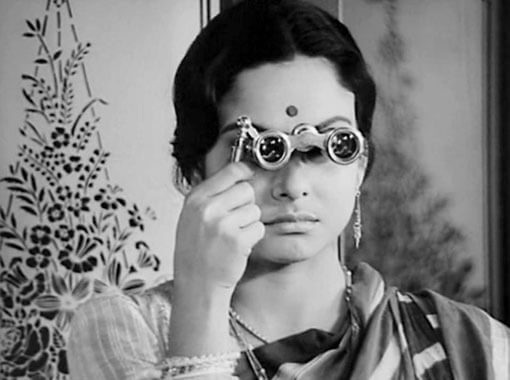 The camera continuously reminds us of art and deception, and that a fictional story has encouraged this cinematic representation. Brinda Bose explains, “cinema is notorious for making the unreal somehow appear real due to the medium’s realistic effects, this reminder is clearly a gesture by the filmmaker to distance the narrative from its contents.” The setting is in a Western-style mansion with Victorian décor and dialogues sprinkled throughout the film, reflecting colonial inheritance, oriented toward Western literature and politics. At the same time, parts of the film are packed with details—passages of music, literary allusions, local details, Charu’s lightheartedly flirtatious relation with her debar (brother-in-law)—encouraged in Bengali society, all of which give the film a concreteness that cannot be fully grasped by other cultures. Omar Ahmed wrote in his book Studying Indian Cinema that “Ray frowned upon the pretentiousness of European art cinema in the shape of the French Nouvelle Vague, yet Charulata demonstrated an ability to incorporate new ideas from western cinema without making it look as if he were paying homage to European trends.”
The camera continuously reminds us of art and deception, and that a fictional story has encouraged this cinematic representation. Brinda Bose explains, “cinema is notorious for making the unreal somehow appear real due to the medium’s realistic effects, this reminder is clearly a gesture by the filmmaker to distance the narrative from its contents.” The setting is in a Western-style mansion with Victorian décor and dialogues sprinkled throughout the film, reflecting colonial inheritance, oriented toward Western literature and politics. At the same time, parts of the film are packed with details—passages of music, literary allusions, local details, Charu’s lightheartedly flirtatious relation with her debar (brother-in-law)—encouraged in Bengali society, all of which give the film a concreteness that cannot be fully grasped by other cultures. Omar Ahmed wrote in his book Studying Indian Cinema that “Ray frowned upon the pretentiousness of European art cinema in the shape of the French Nouvelle Vague, yet Charulata demonstrated an ability to incorporate new ideas from western cinema without making it look as if he were paying homage to European trends.”
Bhupati invites Amal to encourage Charu’s penchant for literature, which is his way of encouraging her to be more independent. On the other hand, he completely fails to understand Charu’s apathy and boredom in her antarmahal (inner chamber) of life—the consequences of a network of constrictions imposed on women by their upper-class families, whose heads affected a hypocritical sympathy for progressive ideas. This contrast highlights the film’s critique of the ideological movement that transported modernity into Bengali consciousness. For Bhupati, being liberal and modern means focusing on understanding current affairs and politics, and shying away from intuitive sentimentalism—which arguably forms the substance of any literary endeavor. When Amal shows Bhupati one of his literary pieces, Amabasyar Aalo (The Light of the New Moon), the liberal Bhupati advises Amal to put his talents to more concrete use. As Brinda Bose observes, “the film marks the peculiarities of the coming-to-consciousness of the Indian modern.” The irony of Charu’s existence is that she is established in contrast to the men in her life: the perplexed husband Bhupati; the equally indecisive Amal. Yet, she is confined to being nabeena, caught between the traditional and the modern.
Charu’s dilemma calls to mind Gayatri Chakravorty Spivak’s gendered subaltern essay, Can the Subalterns Speak?, where she writes, “between patriarchy and imperialism, subject-constitution and object formation, the figure of the woman disappears, not into a pristine nothingness, but into a violent shuttling which the displaced figuration of the ‘Third World woman’ caught between tradition and modernization.” In this film, the burden of representation is on perceiving the allegorical delicacy of a ‘Third World woman’ who is trapped between desertion and presence, historical possibility, and simulated independence. The encumbrance of representation in the film was to demonstrate the vicious influence of alien and alienating modernity that, alongside British domination, must be confronted—at least about its apprehensions for female subjecthood. Modernity is irrevocable. Keya Ganguly writes in one of the chapters from her book, The (Un)moving Image: Visuality and Modern in Charulata, that Ray’s production is not meant to disenchant “but rather to stress the fatal aspects of the predicament allegorized in Charulata,” and that his vision “permits no reversal because reversibility would ensure that we are still within sight of a resolution of historical dilemmas.”
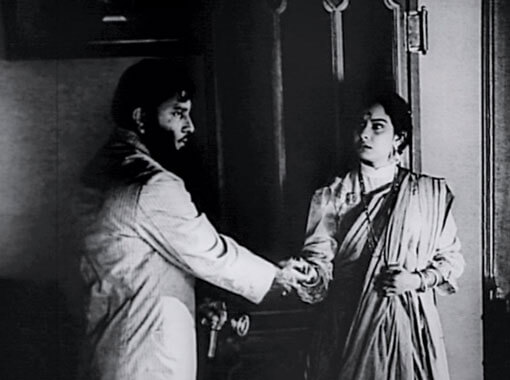 Bhupati considers himself a man of principles who can grasp complex political ideologies, a believer of Western liberal ideology. Yet, he lacks any understanding of human behavior and emotional intelligence. Charu and Bhupati’s immobility is captured in the closure, symbolized by grainy freeze-frame shots on the threshold of their house—perhaps their common life will be regenerated once the filmic action ends. This expressionist tableau is used to contrast the movements that Ray uses throughout the rest of his film, and in so doing, to challenge the faith in the idea of historical perseverance trapped between the light of its own beginning. The final freeze-frame technique was inspired by the final shot of François Truffaut’s The 400 Blows (1959), which was thought to be one of the most agonizing endings by Ray. The last frame of the film says Nashtanirh, which appears untranslated in Bengali script in the subtitle to refrain from the seductions of translation. One can read the script, but one who is paying attention to the closing frame will only be able to distinguish the writerly gesture of the film, which contradicts the anticipation held out in the previous frame: Charu holding out her hand to her husband, who deliberately never reaches it. This ending signifies Bhupati’s liberal ideology struggling with the impulsive and emotional actions of individuals like Charu, who remain imprisoned in “The Broken Nest.” Permanently shattered or not, Ray leaves that for us to decide.
Bhupati considers himself a man of principles who can grasp complex political ideologies, a believer of Western liberal ideology. Yet, he lacks any understanding of human behavior and emotional intelligence. Charu and Bhupati’s immobility is captured in the closure, symbolized by grainy freeze-frame shots on the threshold of their house—perhaps their common life will be regenerated once the filmic action ends. This expressionist tableau is used to contrast the movements that Ray uses throughout the rest of his film, and in so doing, to challenge the faith in the idea of historical perseverance trapped between the light of its own beginning. The final freeze-frame technique was inspired by the final shot of François Truffaut’s The 400 Blows (1959), which was thought to be one of the most agonizing endings by Ray. The last frame of the film says Nashtanirh, which appears untranslated in Bengali script in the subtitle to refrain from the seductions of translation. One can read the script, but one who is paying attention to the closing frame will only be able to distinguish the writerly gesture of the film, which contradicts the anticipation held out in the previous frame: Charu holding out her hand to her husband, who deliberately never reaches it. This ending signifies Bhupati’s liberal ideology struggling with the impulsive and emotional actions of individuals like Charu, who remain imprisoned in “The Broken Nest.” Permanently shattered or not, Ray leaves that for us to decide.
Bibliography:
Ahmed, Omar. “Feminist Concerns.” In Studying Indian Cinema, 87-106. Liverpool University Press, 2015. doi:10.2307/j.ctv13840p5.8. Accessed December 27, 2020.
Bhattacharya, Amitabha. “Satyajit Ray’s Calcutta: Friend or Adversary?” India International Centre Quarterly 17, no. 3/4, 1990, pp. 301-313. http://www.jstor.org.ezproxy.neu.edu/stable/23002471. Accessed December 27, 2020.
Bose, Brinda. “Modernity, Globality, Sexuality, and the City: A Reading of Indian Cinema.” The Global South 2, no. 1, 2008, pp. 35-58. http://www.jstor.org.ezproxy.neu.edu/stable/40339281. Accessed December 27, 2020.
Ganguly, Keya. “The (Un)moving Image: Visuality and the Modern in Charulata.” In Cinema, Emergence, and the Films of Satyajit Ray. University of California Press, 2010, pp. 63-91. http://www.jstor.org.ezproxy.neu.edu/stable/10.1525/j.ctt1ppj5q.8 Accessed December 27, 2020.
Majumdar, Rochona. “Debating Radical Cinema: A History of the Film Society Movement in India.” Modern Asian Studies, 46, no. 3, 2012, pp. 731-67. http://www.jstor.org.ezproxy.neu.edu/stable/41478328. Accessed December 27, 2020.
Morris, Rosalind C., editor. Can the Subaltern Speak?: Reflections on the History of an Idea. Columbia University Press, 2010. doi:10.7312/morr14384. Accessed December 27, 2020.

Maaisha Osman is a health care journalist based in Boston. She has written for Boston Globe Media’s STAT News, Scope, and Point of View Magazine. A lifelong cinéphile, she dreams of writing book of essays on films by her favorite directors like Ingmar Bergman, Andrei Tarkovsky, Satyajit Ray, Rwitik Ghatak, François Truffaut, Wong Kar-wai, and others.
Unlock More from Deep Focus Review
To keep Deep Focus Review independent, I rely on the generous support of readers like you. By joining our Patreon community or making a one-time donation, you’ll help cover site maintenance and research materials so I can focus on creating more movie reviews and critical analysis. Patrons receive early access to reviews and essays, plus a closer connection to a community of fellow film lovers. If you value my work, please consider supporting DFR on Patreon or show your support in other ways.
Thank you for your readership!
Brian Eggert | Critic, Founder
Deep Focus Review




